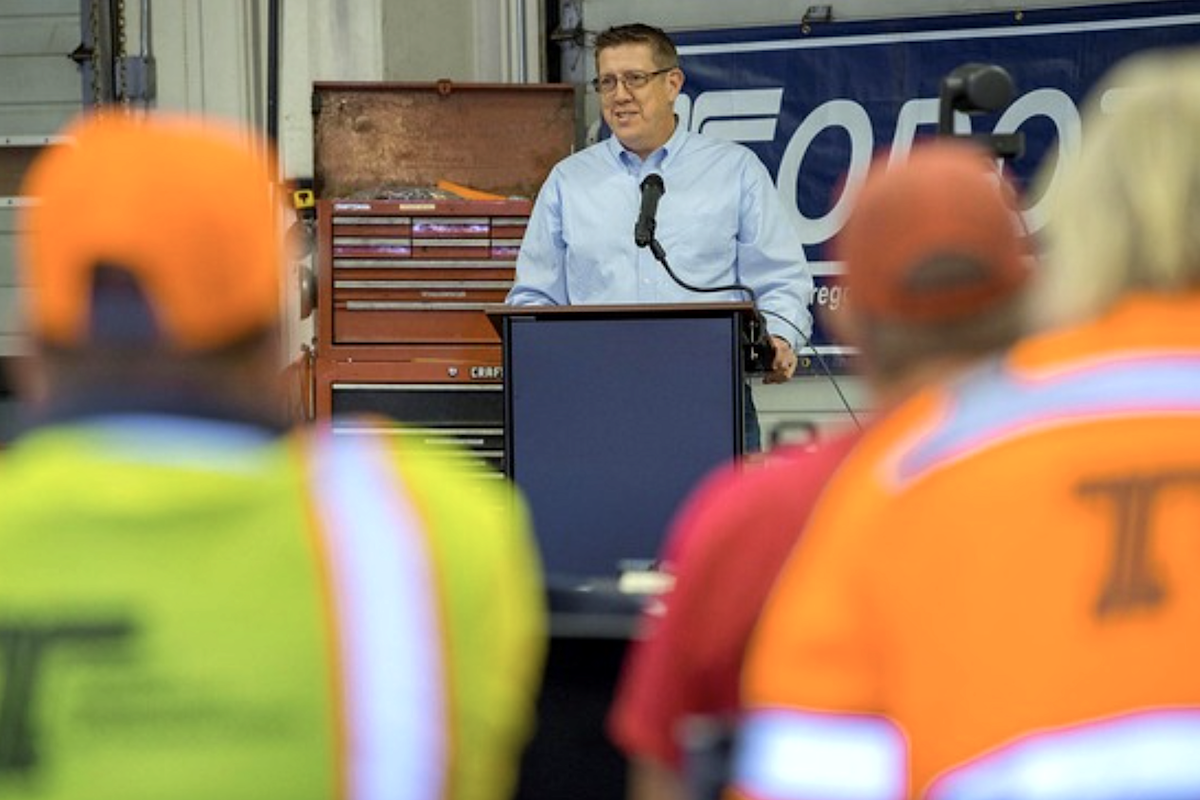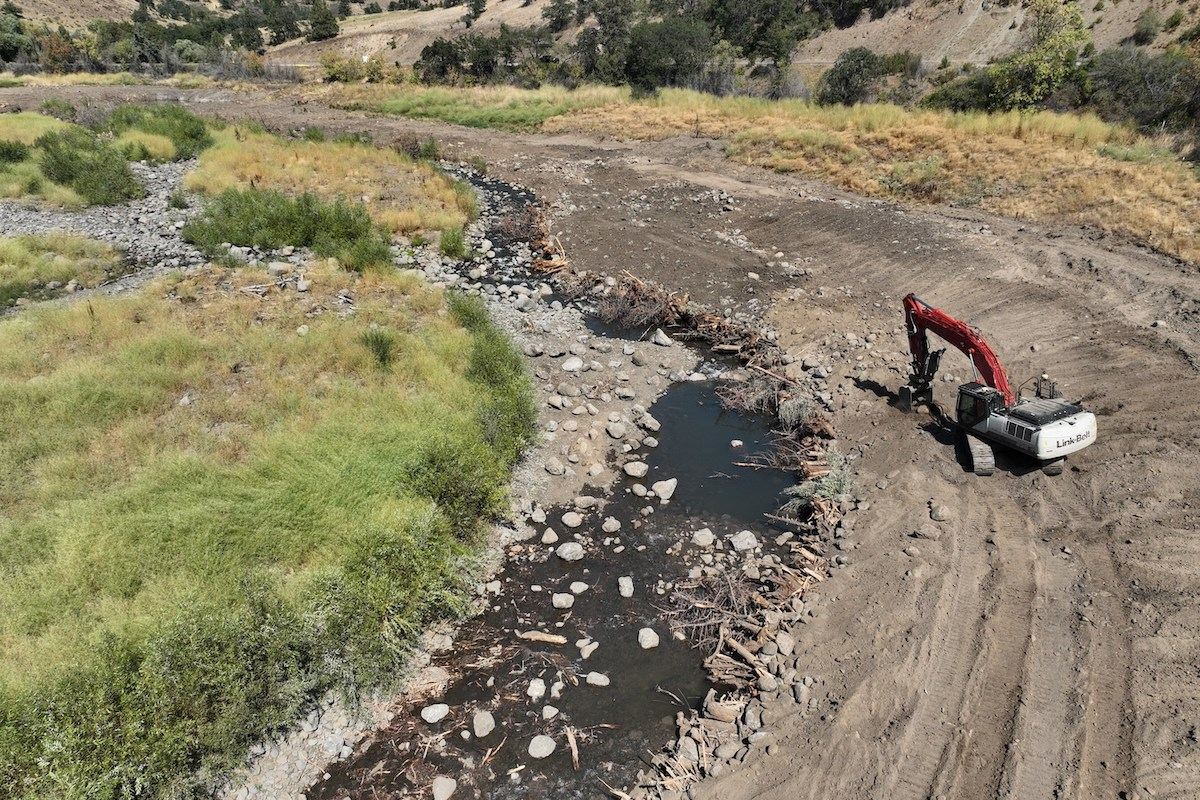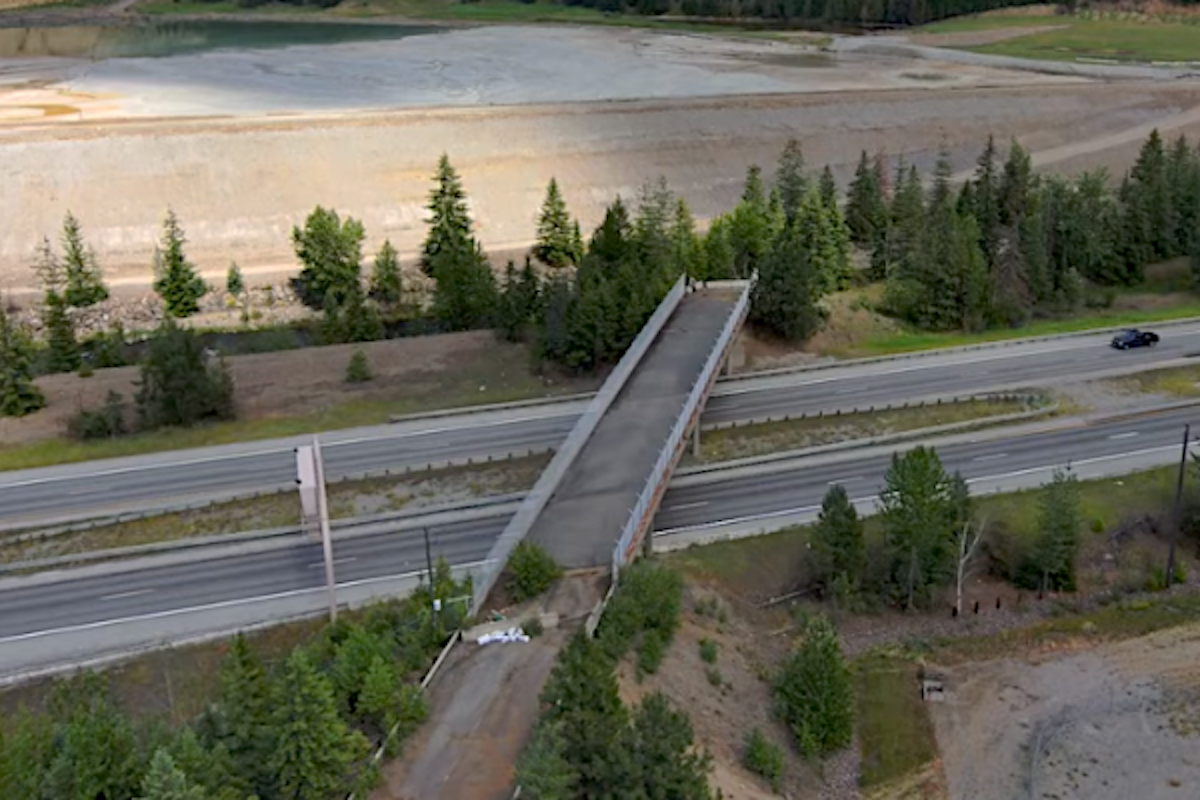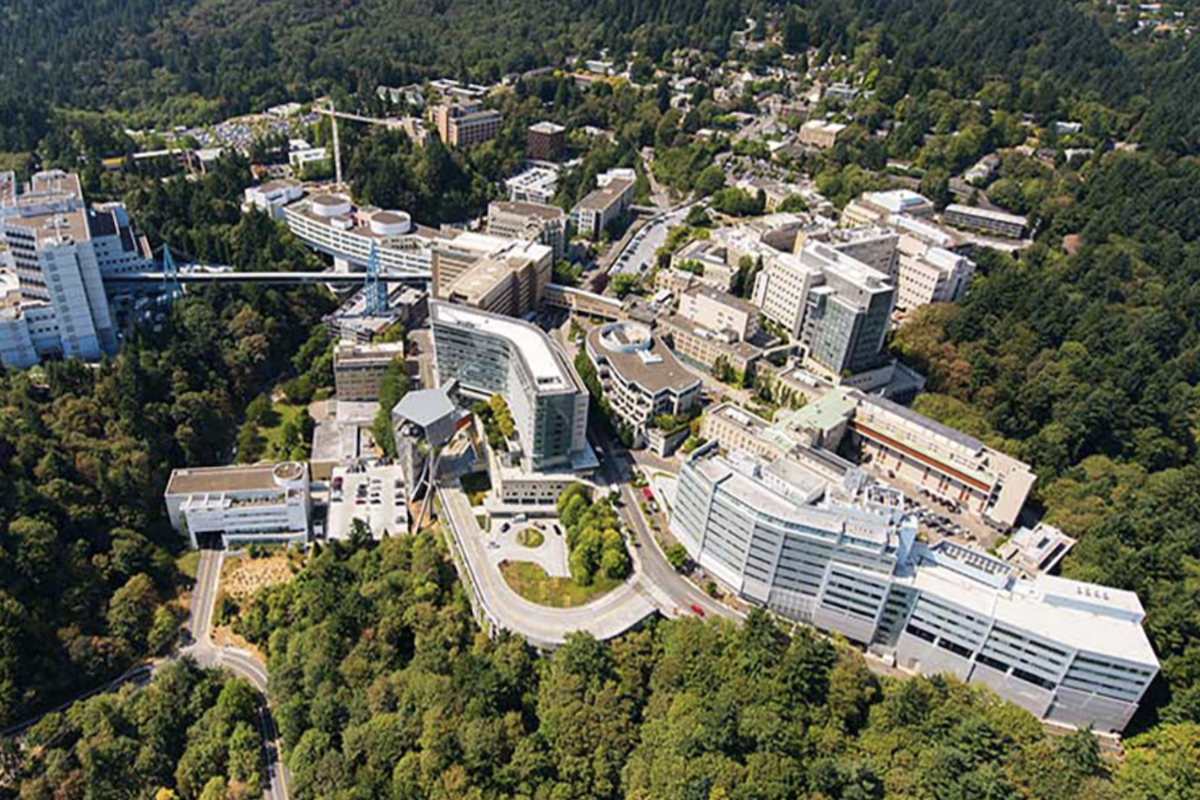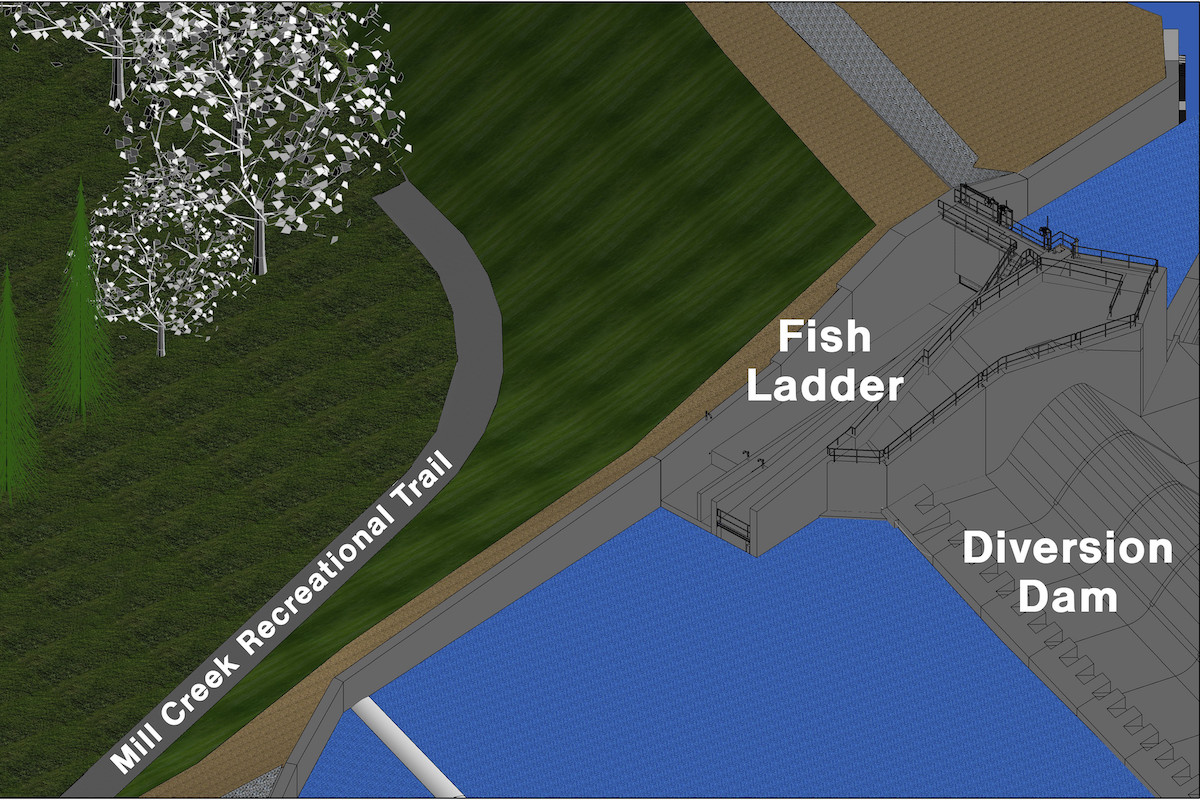Over the years, numerous studies looked at how to improve the congested Highway 10 corridor but work never moved forward because of a high price tag and lack of shared vision between the city and state. Eventually, as the Minnesota Department of Transportation (MnDOT) designed improvements on the eastern end of the corridor, the City of Anoka planned work at the western end. In 2019, the state and city projects were combined into a single project with MnDOT handling contract administration. Funding came from federal, state, and local sources.
The City of Anoka awarded Shafer Contracting Co., Inc., of Shafer, Minnesota, the $50 million construction contract for the western portion. MnDOT awarded Kraemer North America LLC of Burnsville, Minnesota, the $45 million contract to construct the eastern portion. Both contractors are installing new storm and sanitary sewer as they upgrade Highway 10 to a freeway.
Shafer’s contract includes constructing three bridges, a new interchange, and a new overpass, as well as reconstructing an interchange. That includes a five-legged roundabout and a grade-separated roundabout interchange.
Kraemer is rebuilding the two Highway 10 bridges over the Rum River and replacing an outdated diamond interchange with a single point urban interchange featuring a single traffic light to control all left turns. Their contract also includes rebuilding an additional bridge with a new trail crossing.

| Your local Trimble Construction Division dealer |
|---|
| SITECH Northwest |
Shafer started prep work in fall 2021 and both contractors began major construction in March 2022. Most of the work will finish by the end of the 2023 construction season, with turf establishment continuing in spring 2024.
Before this project, heavy traffic volumes and signals led to slow speeds, significant backups, and safety issues during peak hours on Highway 10 and its cross streets. This project removes the signals, turning Highway 10 into a freeway. Frontage road improvements on both sides of the highway and better-connected sidewalks and trails will also improve local circulation. Once complete, projections show delays in Anoka decreasing by 75 percent and crashes by 57 percent.
On the western portion of the project, “At one point we had three pipe crews, four grading crews, and an MSE wall crew,” said Chris Tredinnick, Shafer’s Project Manager. “Our bridge subcontractor also had two-and-a-half crews out there.”
With Kraemer’s workforce added in, “Overall the job has a couple hundred people onsite,” Tredinnick said.
Backhoes, dozers, loaders, rollers, and an average of 20 trucks circulate through the jobsite every day. Crews will excavate a total of 300,000 cubic yards of soil and reuse all of that in the project footprint, Tredinnick said.
In addition to the quantities of people and equipment sharing the worksite, the cemeteries that line both sides of the highway limit workspace and require extra precautions.
First, “During design, we completed ground-penetrating radar scans of the areas around the cemeteries to look for anomalies to avoid any surprises,” said Eric Johnson, Project Manager for Design Consultant Bolton & Menk, based in Mankato, Minnesota.
Before working around the cemeteries, construction crews underwent special training.
“Our consultant also prepared a cultural resources monitoring plan and was onsite to observe the work any time excavation was done within close proximity to a cemetery,” said Brian Porter, MnDOT Project Engineer.
An additional complication in the tight space comes from coordinating the two separate parts.
“There is no separation between the two jobs – the construction limits of our job butt up against Kraemer’s job,” Tredinnick said. “And their job was designed like our job doesn’t exist. Their plans show traffic coming across the construction limits into the preexisting configuration, which isn’t there anymore. They had to redraw their traffic control plan to fit what’s happened since the original design.”
In addition, space constraints affect Kraemer’s work on the new Rum River bridges. Because the Department of Natural Resources permit limited the size of work pads extending into the river, Kraemer designed multiple work pads with bridge spans.
“This allowed them to extend further into the river with the same amount of backwater rise,” said Joe Krueger, MnDOT Project Supervisor.
Ultimately their work will elevate Highway 10 over two cross streets while lowering those roads to create standard bridge clearance. In the original staging plan, they would build the bridges in 2022, allow traffic to travel under the structures with reduced clearance, then lower the roads in 2023.
However, as crews prepared to set beams in August 2022, Shafer voiced concerns to MnDOT about the safety of motorists on the road below and workers on the bridge deck. The subsequent discussion led to reshuffling of construction and traffic control phasing.
“The beam setting was on the critical path and we were about a week from doing it, so there really wasn’t time to have a problem like that,” Tredinnick said. “Between the owner and the contractor, we collaborated and resolved the issue in an unbelievably short amount of time.”
The team decided to keep the road under one bridge closed through the winter and institute a temporary closure on the other street to correct the safety issue. After running the closures through the city and other stakeholders, then communicating them to the public, crews set up a temporary signal and detour for the short-term closure.
“We had to line up the subcontractors – our traffic control, electrician, and asphalt paver to put down some temporary widening – and get everybody rerouted in a really short period of time,” Tredinnick said.
While traffic was diverted, crews lowered the road to provide a 13.6-foot legal clearance height under the bridge.
“That road is supposed to have a 6-foot cut and we took 3 feet out of it,” Tredinnick explained. “We couldn’t take the entire 6 feet at that point because it wouldn’t tie into the existing road, but we took as much as we could, then built a temporary configuration that allowed the road to reopen.”
To help make up for lost time, “We changed the bridge to a full-depth deck instead of having an overlay,” Tredinnick added. “That shortened the amount of time needed to build the deck, and ultimately we opened the road in about the same period of time as we originally planned.”
The final cuts to lower both roads will occur this year.
“When we bid the job, we chose to jack that because it’s right next to businesses,” Tredinnick said. “However, when we went to do the work, soil conditions didn’t allow it to happen that way.”
As Shafer and MnDOT considered how to fix the problem, “There was a big hole in the ground for a long time that kept me up for a lot of nights,” Tredinnick said. “This happened in the middle of the summer right in the middle of where we were trying to build the road.”
The solution required switching to an open cut. With that, “We rerouted the drainage system so we weren’t trying to dig a 35-foot hole 15 feet from everybody’s property,” Tredinnick said.
Shafer had lined up a subcontractor to perform the jacking but when that wouldn’t work, their own crew took over. They rented a Komatsu PC800 Backhoe and oversized trench boxes.
“The biggest challenge was that we couldn’t pull in more people because the labor shortage is so bad,” Tredinnick said. “We had to get more work done with the crew we already had – in the same amount of time. We worked a ton of overtime all summer long.”
Over the winter, construction paused, except for noise walls. Kraemer restarted their work in March 2023 and Shafer restarted in April 2023. After another summer of construction and congestion, travelers will finally find relief when the new configurations fully open at the end of 2023.
- Coordinating Agencies – Minnesota Department of Transportation: Dan Penn, Metro District Resident Engineer; Joe Krueger, Project Supervisor; Brian Porter, Project Engineer; MnDOT Metro District employees; City of Anoka, Minnesota: Ben Nelson, Project Manager; Anoka County, Minnesota: Joe MacPherson, County Engineer
- Design Consultant – Bolton & Menk, Mankato, Minnesota; Eric Johnson, Project Manager; Bob Meurer, Construction Project Engineer
- General Contractors – Western Portion: Shafer Contracting Co., Inc., Shafer, Minnesota; Chris Tredinnick, Project Manager; Eastern Portion: Kraemer North America LLC, Burnsville, Minnesota; Nathan Flogel, Project Manager
Photos courtesy of R. Kent Barnard, MnDOT Metro District






















